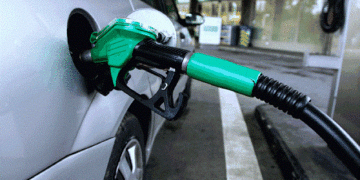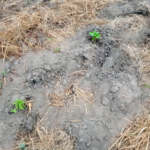World economy is experiencing, at the moment, an economic crisis more turbulent than the economic meltdown of 2007 – 2008. This has tasked the human brain to come up with solutions on what next to do to avoid a total catastrophe.
Last week, we identified agribusiness as one to the options of the new normal. This piece begins a series of analytical discourses into the sector. Where circumstances remain equal, we would publish the series on weekly basis.
At independence, Nigeria had much of her income coming from agriculture. We earned forex from cash crops like groundnut, rubber, cocoa, timber, oil palm, and so on. From early 70s, successive governments have come up with varied initiatives involving huge funding.
Sadly, these have yielded less fruits than expected. We had such lovely agricultural development programs like National Accelerated Food Production Programme (NAFPP) in 1972, Operation Feed the Nation (OFN) and River Basin Development Authority (RBDA) both in 1976, Green Revolution (GR) in 1980, Directorate for Food, Roads and Rural Infrastructure (DFRRI) in 1986, Agricultural Transformation Agenda (ATA) in 2011 and the rest.
Despite this huge investment on the agro space, oil export still accounted for about 90% of our total revenue while the agricultural sector contributed less than 10%. With about 84 million hectares of arable land, Nigeria could have augmented the revenue from oil thereby leading to a vibrant, buoyant economy but only 40% of this land is under cultivation.
The discovery of oil in Nigerian waters led to the oil boom which later would turn to become economic doom and collapse in disguise.
- Read also: The New Normal: Post Pandemic Implications on the Nigerian Economy
- Barr. Amaka discusses Nigeria’s Business Laws and Tax System: What every Business Owner should Know: Part 1
Geo-political zones and states have totally abandoned their agricultural potentials and monthly hold out begging plates along the linked roads of Aso corridors. These states could actually sustain themselves from their agro outputs and, by extension, feed the nation. The zones have special crop ranges that do so well within their topography.
Getting into the agricultural industry proper, it is pertinent to draw some distinctions between agriculture and agribusiness. The former involves the farming of crops, animal husbandry, fish farming, hunting and forestry while the latter manages agricultural produce from farmgate to the last consumer.
Agribusiness incorporates such alliances between producers, distributors/haulage, packagers, marketers, logistics, sales, supply chain, and so on. Agribusiness is further divided into pre-upstream, upstream, midstream, and downstream sub sectors. Agribusiness inter-links these sub sectors.
The ineptitude of the agro sector has not come without some innate causes or challenges. Quid quid movetur ab alio movetur (whatever is moved is moved by something). Some of the major challenges of the agro value chain include the below.
Majority of Nigerian farmers are traditional farmers using old methods and tools of subsistence farming. This reduces aggregated output capacity. Some use their children as farm helpers without paying them thereby not been able to calculate their total cost of ownership. It is not just a business but a mere means of livelihood.
Mechanized agriculture farms and operates on the large scale and this is where our focus is. The crop production we are talking about, for instance, is not output per plot of land but output per hectare. Traditional agriculture cannot work on a hectare of land successfully.
Lack of storage facilities is another big challenge to the industry. Nigeria loses about 50% of tomatoes produced by farmers annually for an instance. This is because of lack of large-scale storage facilities near the farms. Where they exist, lack of constant electricity still wastes what we cannot consume domestically.
In a chat with some farm managers at the National Horticultural Research Institute (NIHORT), Ibadan sometime in March, they lamented the damage done to agricultural produce because of storage facility challenges.
- Read more: 30.2 Million Americans have lost their Jobs as the Economic Fallout from Coronavirus intensifies
- Coronavirus Update – The Trial of BCG Vaccine Starts in South Africa; Nigeria Records 148 new cases
Cost of logistics also constitutes a challenge to agriculture in Nigeria. Farmers or middlemen who venture into export or who supply to off-takers in the cities most times are discouraged by logistic challenges.
To haul a 40ft container of farm produce for export from Kwara State or Oyo State to Tincan or Apapa wharf costs around N650,000 or N550,000 respectively as at March, 2020. But in 2016, same was around N180,000 or N150,000 respectively. Make the calculations and see where we are today.
Access roads into the farms are bad and constitute some haulage challenges to farmers and off-takers. This hampers input supplies and loading of harvest. A recent trip to a farm somewhere in Kwara in February raised some thoughts in the mind of this writer.
Off the Share (Kwara State) to Lafiaji (Niger State) road, the inroad to this farm was filled with high levels of sandy soil making movement so difficult for motorcycles. One wondered what would be the state of the road come the heavy rains as this is one road that is constantly busy with loaded trucks from the farms.
Among the challenges is the clique of the market associations. Open markets in Nigeria are usually and unnecessarily governed by multiple extortionist associations who primarily want to rip off farmers or middlemen of their profits. They make it so hard to reach the retailing market sellers without them thereby increasing cost of production.
- Read further: Barr. Amaka discusses Nigeria’s Business Laws and Tax System: What every Business Owner should Know: Part 4
Most times, newbies who could not understand the dynamics have witnessed their produce rot in the markets because of lack of patronage induced by these associations.
In all these, the government has a big role to play in arresting or minimizing these challenges. First, government should form strategic alliances with the private sector to make available as many storage plants as possible near the farms. These could also serve as transaction hubs for both off-takers and stakeholders.
A good storage facility is massive investment and may not be shouldered by individuals without government collaboration. We can actually go for renewable energy in this wise and doubly achieve economic growth and some of the goals of the UN-SDG. These storage facilities could equally be cited near major markets for easy access to wholesalers. The major purport is to keep the produce as fresh as at day of harvest with 24/7 power supply.
The government can regulate what happens in the haulage industry but first of all find a decongesting solution to the Apapa impasse. State governments should identify those inroads to farms and leverage farmers with repairing them for smoother usage.
State governments should, as a matter of national interest, eschew personal interests and provide a level playing field within the market for suppliers and sellers by regulating the activities of market associations.
Coming back to the current world economic situation, we realize that gradually, COVID-19 is creating a big gap within the agro sector. Farming is a seasonal venture having planting, maintenance and harvest seasons. The farming season which begins mostly in March/April is almost gone without full-capacity farming activities due to the lockdown.
This gap would definitely translate into food scarcity in the near future. Take for instance maize. We may not have sufficient supply of the crop this May/June because, first, the rains did not come on time; and second, the lockdown kept most farmers away from their farms.
If this lockdown continues, there is a perceived apprehension that this gap would widen. Livestock and fish farming with other crops’ production are not left out. There is currently a short fall in input supplies in this area. Birds, other livestock and fishes are dying in their numbers and farmers are forced, by force majeure, to reduce price and salvage capital where the option exists. Where not applicable, it is total disaster.
How then do we prevent this looming famine? What necessary actions of government can save Nigeria from a total collapse of the agro sector especially from the complementary contributions of smallholder farmers?
How do we mitigate the social malaise of food insecurity that might arise because of this gap? What are the roles of organized private sector in this?
Can massive investment in agriculture yield massive reduction in the unemployment rate?
For answers to these and many more, watch out for the next in the series.
Written by,
Edokobi Azuka Stephen
+234 803 553 5948





















































